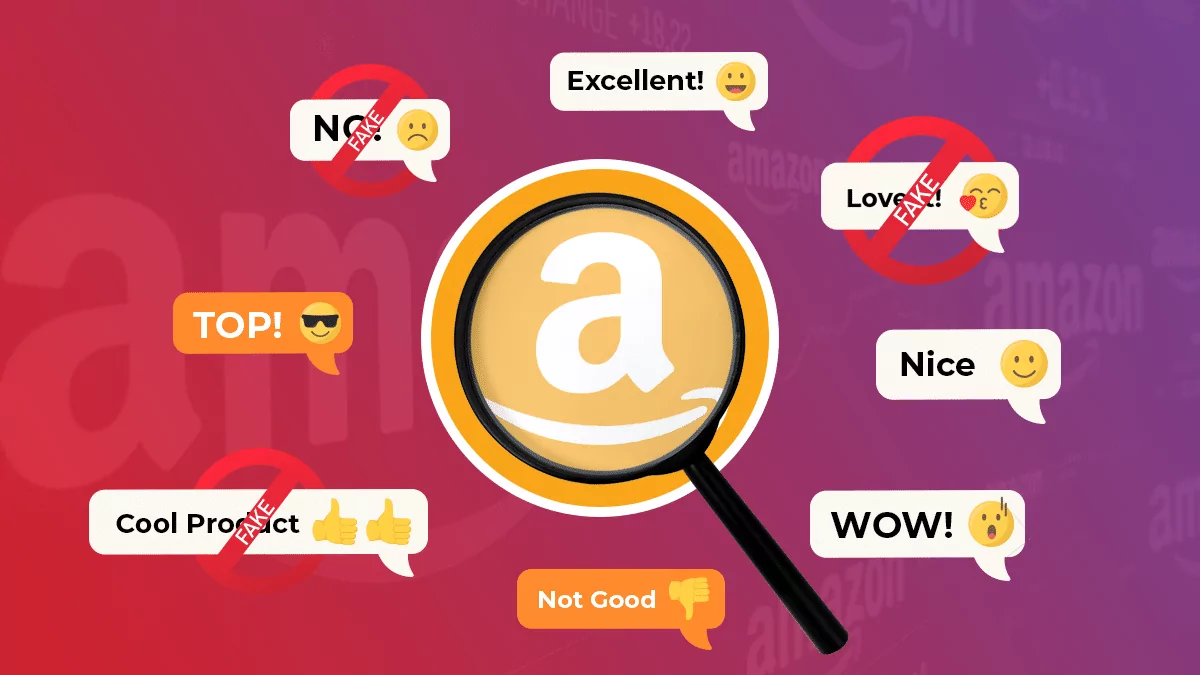
Does Amazon Fake Reviews Exist?
Does amazon fake reviews really exist? Not only they do, but there is also no sign for them to ever go away.
And it happened to all of us. Say you want to purchase a product on Amazon, you’re scrolling through options, and you take a quick look at the customer reviews to see the pros and cons of each item, Some appear to be balanced, honest, and thought-out; while others are so overly enthusiastic, that you can’t avoid doubting their authenticity.
Here’s the thing: Most shoppers rely on customer reviews when they’re purchasing an item or ordering a service online. A research published by BrightLocal in 2018 showed that 86% of consumers read the reviews; 78% also said they trust online reviews as much as personal recommendations. These numbers are even higher when it comes specifically to young consumers.
However, customer reviews are not always reliable. Over the last few years, there has been a surge of fake reviews being published on product pages on popular eCommerce sites like Amazon, Walmart, and Sephora. A study published by FakeSpot, as reported by CBS, said that “30% of Amazon reviews are fake or unreliable.”
The surge in fake reviews is not a problem just for consumers. It can potentially be a huge problem also for businesses who want to do customer analytics to gain valuable insights on the market and consequently make informed business decisions. Here’s how…
The Importance of Customer Reviews in CX Analytics
Customer analytics (often referred to as “CX Analytics”) is a type of market research used to analyze customer satisfaction, monitor the competition, see how a product or a company is performing, and so on. In one sentence, it’s a process that allows you to use data retrieved from your customers’ behavior to make smart and well-informed business decisions.
Data for customer analytics is retrieved in several different ways. A common one is the Net Promoter Score (NPS), a simple method used to measure customer satisfaction. Another way is predictive analysis, which uses artificial intelligence and machine learning to predict what customers will want in the future.
However, customer reviews are one of the best sources of information, whether you’re researching your own customers or your competition’s customers. They’re easy to retrieve, as they are already online, and they’re quite exhaustive. They’re also ideal for customer segmentation. All you need to do is use a scraping tool or an API to gather the reviews.
Customer reviews are important because they express the Voice of Customer (VoC), which includes all the opinions, comments, and critiques of a pool of customers regarding a service or a product. Reviews can be analyzed with a Sentiment Analysis tool, which classifies all comments as positive, negative, and neutral thanks to machine learning, text mining, and text analytics. (The same applies to social media posts, that are a good indicator for customers’ social sentiment.)
A set of customer reviews can make or break a product or service, or even a business. If there are fake reviews being published on eCommerce sites like Amazon, that can be risky for businesses, but also can be misleading for those who perform sentiment analysis.
Spotting The Fake Reviews Out There
Exposing fake reviews is not so hard. You have to look at two things:
- (1) The review itself
- (2) The reviewer’s profile.
A fake review is either extremely positive or extremely negative. It’s likely to have either the maximum or minimum star rating.
Positive fake reviews typically don’t mention any flaws in the product and they recommend the product unconditionally. Negative fake reviews often recommend a different product—a competitor. The information also doesn’t match what other reviewers are saying, and the grammar is often not correct. In addition, a fake review is unlikely to have the “verified purchase” tag.
A fake reviewer posts only 5-star and 1-star reviews, and typically publishes hundreds of review every day; that’s a major red flag. Who spends their entire day shopping and reviewing products on Amazon?
The Impact of Fake Reviews on CX Analytics
When you’re scraping customer reviews to perform sentiment analysis, you obviously can’t analyze each review manually to determine whether it’s real or fake. That would take an enormous amount of time and cost you lots of money.
While there is a significant percentage of fake reviews published on almost every Amazon product page, the majority of reviews are still authentic.
Yet, it’s important to use a CX Analytics tool that knows how to recognize fake reviews. Why bother go through the process if the data you’re getting is flawed by the fake reviews out there?
Revuze’s sentiment analysis tool, for example, uses AI and machine learning to adapt to each market segment, learn the relevant patterns, and recognize fake reviews based on language and sentiments. As soon as the AI spots a fake review, it dismisses it, and doesn’t include it in the relevant data.
According to Niv Elad, VP Engineering, “Revuze’s self-learning AI compares the reviews of each product to the industry’s standards and competitors. If it detects anomalies, it ignores the suspicious reviews when calculating the sentiment analysis.”
In short, using the right technology can make a huge difference.
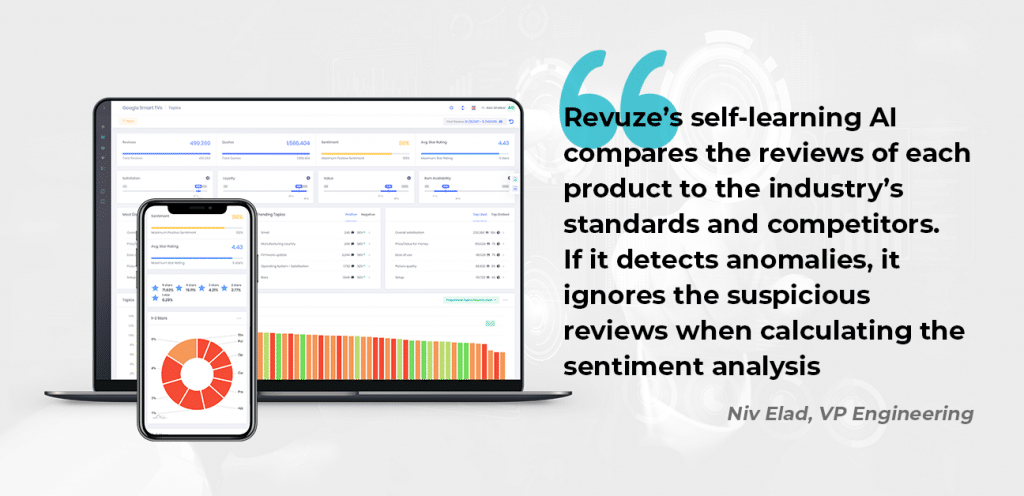
About Revuze
Revuze’s AI-powered solution enables brands to quickly understand their product and customer satisfaction issues, and to automatically score and rank their brand’s performance relative to its competitors and to the market.
If you want to learn more about Customer Analytics and Sentiment Analysis, check out our Blog.
 All
Articles
All
Articles Email
Analytics
Email
Analytics




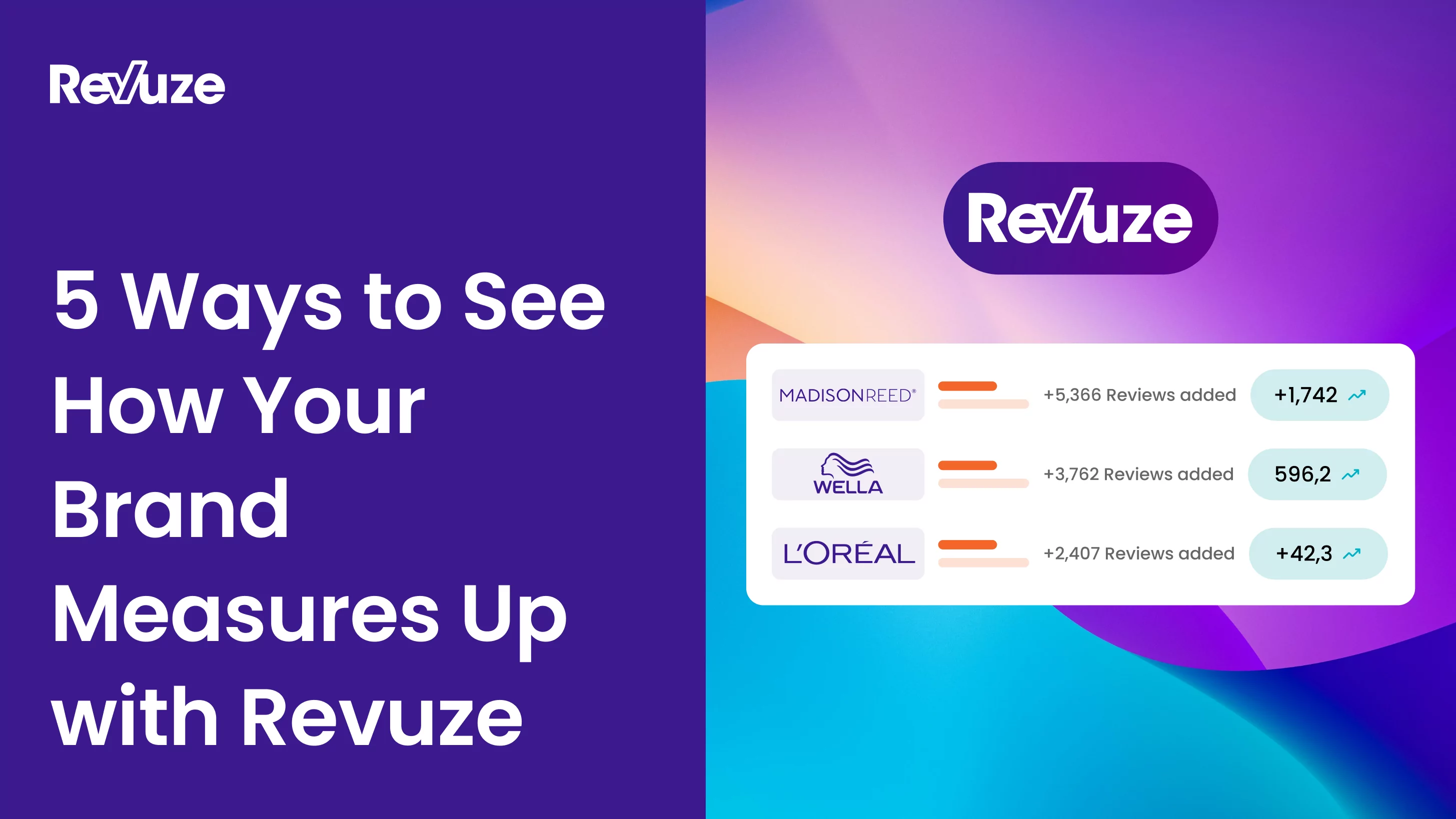

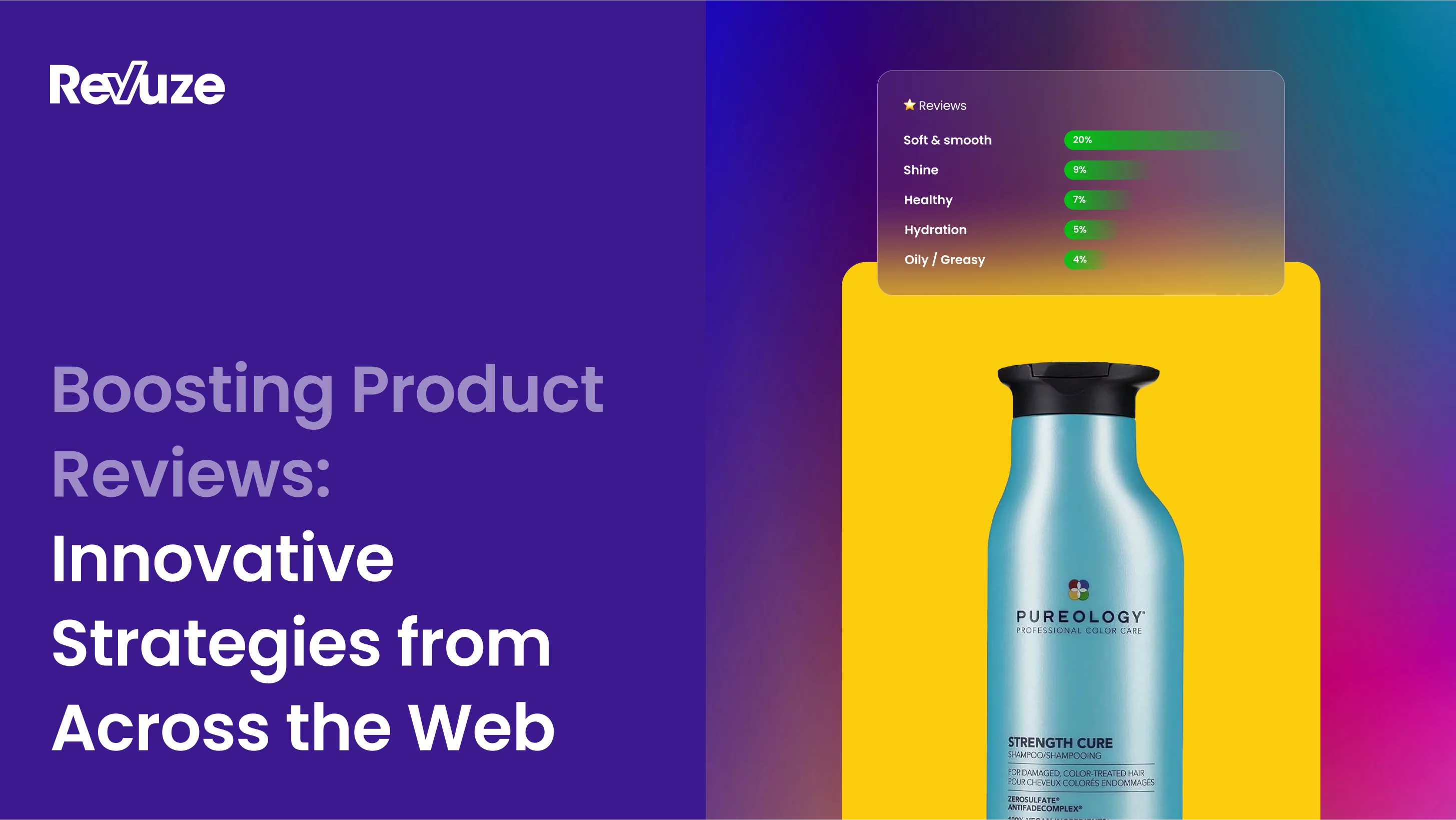
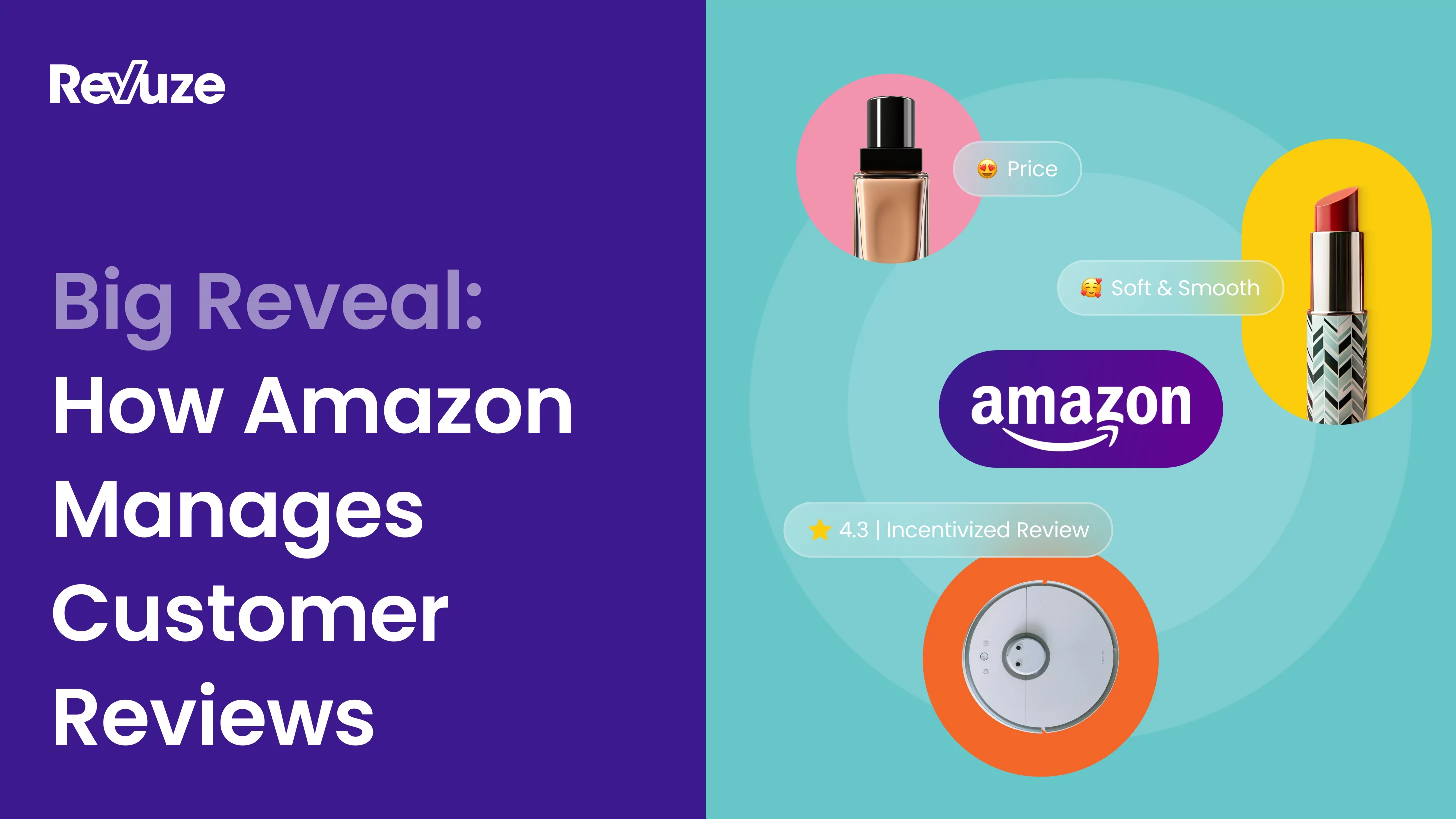
 Agencies
Insights
Agencies
Insights